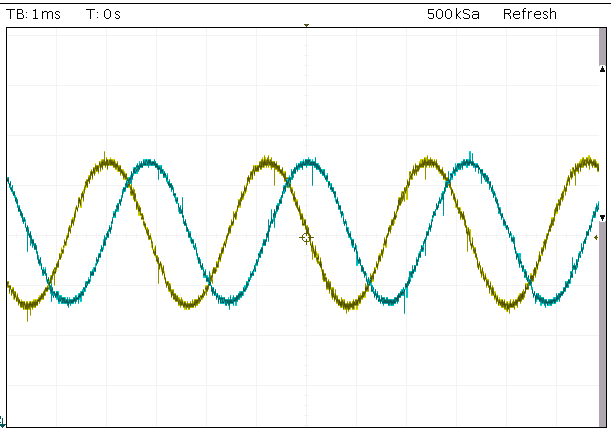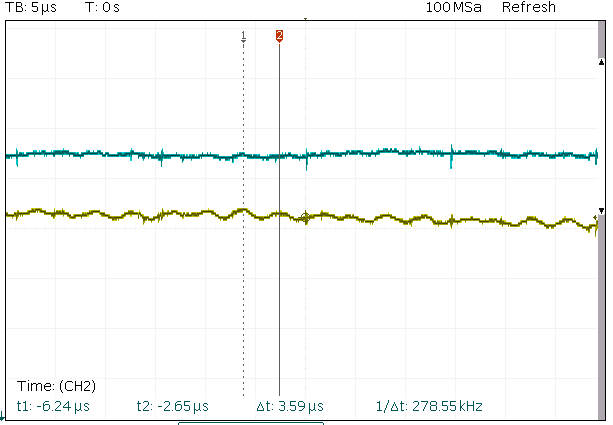This is how Duet's microstepping and interpolation look like
-
Here are a few oscilloscope screenshots that show the current through the two coils of a stepper motor while moving.
The interpolation results in pretty smooth sine waves, one following the other by 90 deg (half of a full step?) The full steps are represented by full current in one coil and zero current (horizontal center line) in the other.

This zoom show the micro/interpolation steps, with tiny fast fluctuations of the stepper motor driver's chopper.

This closer zoom shows the actual fluctuations of the chopper which are at about 300khz.

To measure the currents I used two Alegro ACS70331EESATR-005B3 isolated current sensors which converted the currents to voltages that can be displayed on an oscilloscope. My goal is to check the feasibility of a low cost, DIY, open source stepper analyzer.
-
@zapta said in This is how Duet's microstepping and interpolation look like:
My goal is to check the feasibility of a low cost, DIY, open source stepper analyzer
That sounds interesting, so the idea would allow tuning of the stepper signals to the specific motors?
-
@T3P3Tony said in This is how Duet's microstepping and interpolation look like:
That sounds interesting, so the idea would allow tuning of the stepper signals to the specific motors?
I am not sure exactly what it should do but my thinking is that if there is a way to monitor the current and extract things such as position, speed, and waveform, it will be useful
 For example, if it moves too fast or the supply voltage is insufficient, you will start seeing distortions. I am not sure if it required also to monitor the coil voltages, it adds complexity but may be useful.
For example, if it moves too fast or the supply voltage is insufficient, you will start seeing distortions. I am not sure if it required also to monitor the coil voltages, it adds complexity but may be useful.I ordered a Teensy 4 and a small LCD so will see how it goes.
One thing I want to extract is retraction, for example a moving graph that shows the momentary length of filament that was 'in' and is now 'out'.
-
The chopper frequency is about 40kHz. If you are seeing a signal at 300kHz, that is probably ringing as a result of stray inductance and capacitance.
-
@dc42 said in This is how Duet's microstepping and interpolation look like:
The chopper frequency is about 40kHz.
I see, so these may be the fluctuations in the second screenshot.